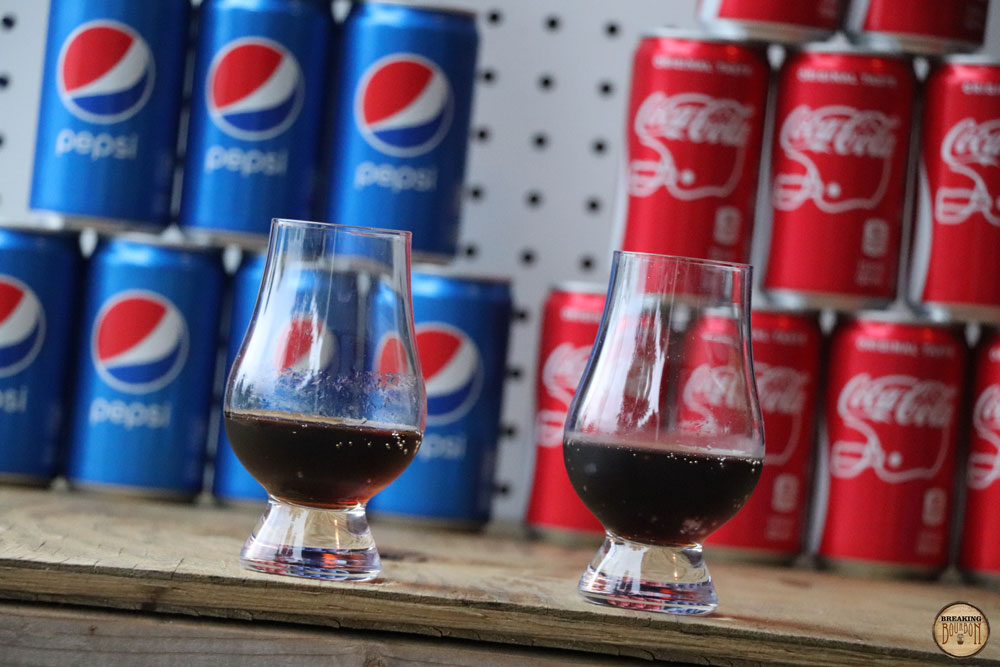In today’s competitive landscape, brands are facing challenges as consumers have an abundance of choices and the cost of switching is increasingly high. Therefore, what strategies can brands employ to attract and retain customers, as well as predict their future behavior?
Let’s join Brands Vietnam in a conversation with Mr. Nguyen Hai Minh, CEO of Wisdom Agency and the Communication Representative of Landor & Fitch in Vietnam, to delve deeper into this topic.
Deep Dive is a series of in-depth interviews that explores significant decisions, topics, and notable events in brand building, marketing, advertising, and communications.
- Firstly, could you please provide an overview of the current trends in strategic brand design?
The concept of branding has evolved through different stages.
Initially, branding was considered a relatively new concept compared to other terms such as marketing or general business management. The definition of branding simply revolved around visual identification, such as logos, packaging, and labels.
Currently, when referring to a product, consumers often mention tangible values, such as durability, speed, quality, and aesthetics. However, when discussing a brand, they tend to emphasize more on values related to emotions.
For example, in blind taste tests between different soft drink products, participants may not accurately identify the product they are consuming. As a result, they may evaluate that Pepsi tastes better than Coca-Cola. However, when they become aware that it is the Coca-Cola brand, they tend to prefer Coca-Cola over Pepsi.
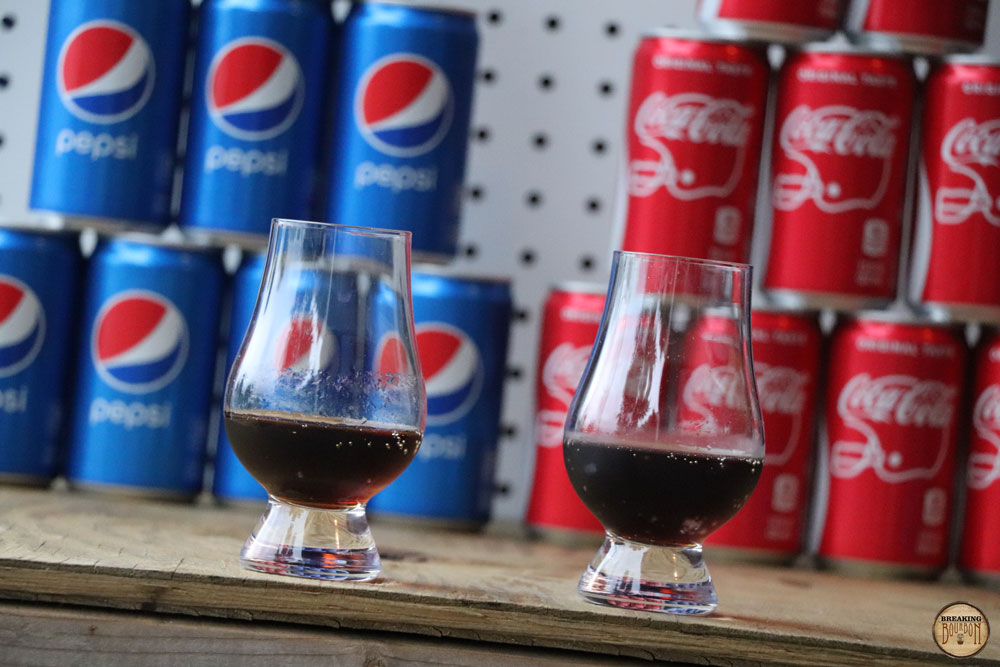
Thus, over time, consumers have come to realize that a brand is not merely composed of tangible elements but also encompasses intangible, emotional values. A brand is not just what customers see; it is also what they feel.
In a developing country like Vietnam, people are seeking improvement in various aspects of their lives, both material and spiritual. Similarly, the economy has gone through and is currently experiencing corresponding stages of development.
The initial stage focused on large-scale production of goods, emphasizing on quantity. Gradually, attention shifted towards the quality of products. Subsequently, marketing and sales became crucial — once the products were improved, they needed to be strategically introduced to the market to attract customers. Next comes the stage of services, which demands customer care and the establishment of an ecosystem to retain customers while preventing them from switching to other products or services. Apple serves as a prime example of this model.
In my opinion, we are currently in the era of “Economy 5.0” where user experience takes center stage.
Therefore, the concept of “experience” has become more prevalent, particularly in the field of digitization. People talk about UX/UI (User Experience/User Interface) and expand the discussion to include customer experience (CX). This has prompted agencies to adjust and broaden their range of services, shifting their focus from visual aspects (brand identity) to providing comprehensive brand experience consultancy across all customer touchpoints.
This trend highlights significant potential for brand experience development. However, in the Vietnamese market, there still exists a gap and a delay compared to international markets. The majority of projects still primarily address customer needs rather than shaping and harnessing latent needs that customers may not be aware of.
- What can clients and brand agencies do to create an effective and impactful brand experience?
I believe that after the product is completed, the brand needs to refocus on building a holistic user experience that integrates both the “Product” and “Brand” elements. “Product” should emphasize rational aspects, while “Brand” should evoke emotions in customers.
In the past, we used to think of a brand as having a visual identity, a logo, and attractive packaging. However, nowadays, I believe that the true value of a brand lies within, beyond its outward appearance. Therefore, businesses serious about brand building need to seriously focus on user experience by establishing a clear brand strategy platform and a corresponding experiential model.
The brand platform should answer core questions such as “What is our value proposition?”, “What values does our product/service bring?”, “What is our unique belief?”. Then, it is necessary to develop significant ideas, such as the brand’s goals, mission, and unique beliefs.
I am particularly interested in identifying unique beliefs, such as how Nike and Adidas have shattered the traditional belief that high-performance sports are only for professional athletes. They believe that everyone has the potential to achieve great things. Similarly, Dove has spread the message that everyone is beautiful in their own unique way.

A brand must represent a unique belief. Identifying this belief will create an inspiring story that can be shared through media and conveyed to consumers. This process of conveying the story is called the brand platform—a set of core elements that are essential for a brand. The brand platform is likened to the poetic essence, the spice that makes a product more consumable.
After identifying the brand platform, there are two models I want to mention for building an effective brand experience. The first model is “Brand Behavior” and the second model is “Brand Signature“.
“Brand Behavior” focuses on what the brand does (What you do?), what the brand says (What you say?), and the brand’s dreams and vision (What was your dream?). This model is suitable for industries with long-term tendencies that emphasize overall harmony, such as education, real estate, or consumer goods.
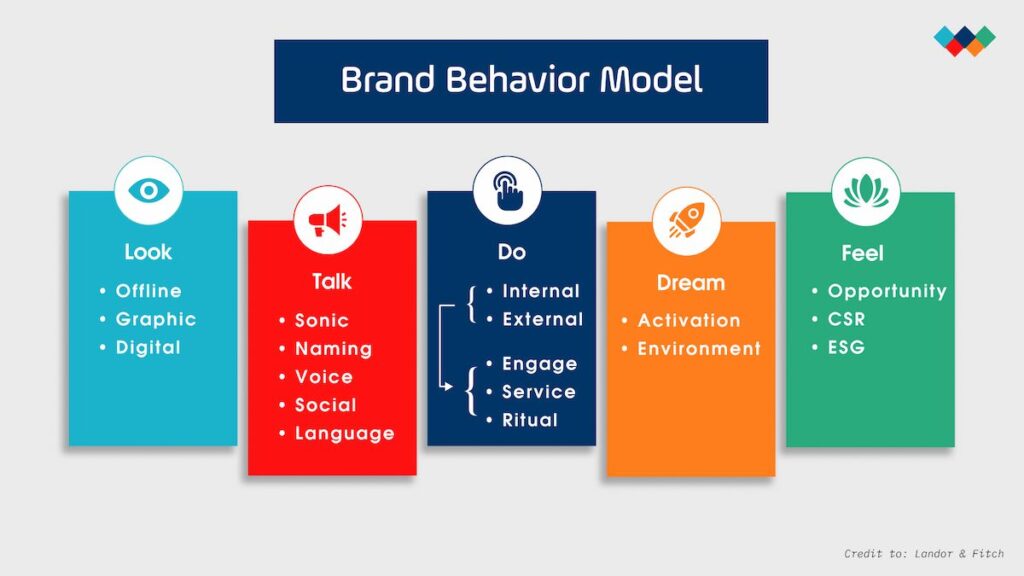
Source: Landor & Fitch
“Brand Signature” focuses on the emotional and sensory experience of customers. It encompasses how customers see, hear, smell, and touch the brand. It also evaluates how customers think, act, and speak about the brand, particularly in creating an “Emotional Imprint” within the hearts of customers. This model is more short-term, visual, and vibrant, suitable for experiences that require immediate recognition.
I believe that brands should create a strong and lasting impression in the hearts of customers because they often remember the emotions that a brand evokes more than the products or words.
“Brand Signature” focuses on the emotional and sensory experiences of
customers.
In summary, to create an impressive brand experience, businesses and agencies need to start by defining a clear brand strategy and platform, then build a unique brand story. From there, they can use the “Brand Behavior” and/or “Brand Signature” models, or ideally both, to create a brand experience that leaves a lasting impression on customers.
- Could you share some examples to illustrate the Brand Signature model?
I would like to share some examples to illustrate the “Brand Signature” model. Currently, brand management has shifted towards a greater focus on short-term sensory experiences. Companies and agencies worldwide are approaching branding from this perspective. In Vietnam, we can expect to see more entities developing services in this area.
The first example is the KitKat brand. While all candies may look similar, KitKat has built a distinct brand by creating the slogan “Take a Break”. This slogan stems from the core brand idea of “Putting a smile in your break”. It encourages customers to add a smile to their break time.
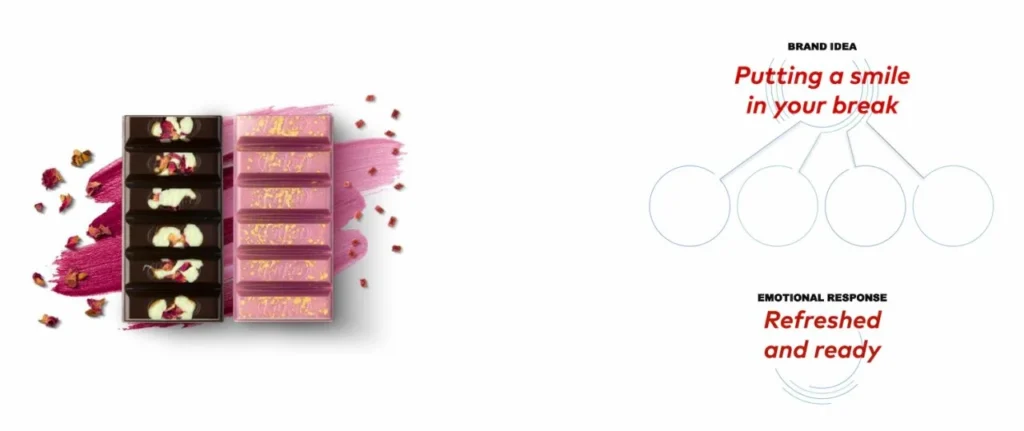
The interesting thing here is that the phrase “Take a Break” not only means “tạm nghỉ” (to take a break) in Vietnamese but can also be understood as “to break” in English. This reflects on the KitKat product, a candy bar that can be easily broken into multiple pieces.
From there, KitKat has identified four specific sensory elements, including seeing, hearing, reading, and doing, to express their brand.
- See: KitKat defines this aspect as “Always inspiring and always new.” They strive to make their products and advertising campaigns innovative and inspiring.
- Hear: KitKat has established three sound attributes for their brand, which are “Joyful,” “Confident,” and “Playful.” They create distinctive melodies that resonate with KitKat’s message.
- Read: KitKat identifies their writing style as “Playful Copilot.” They write in a way that makes readers feel KitKat is a fun and supportive companion, always full of creativity.
- Do: KitKat’s slogan is “Play & Break together.” They execute this through unique experiences such as the KitKat Chocolatory, where customers can shop for products, enjoy the candy, and immerse themselves in the brand experience.

Source: Landor & Fitch
In particular, when it comes to Experience Stores, people typically think of technology-related stores like Samsung or Apple. However, KitKat has taken this concept beyond the technology industry and applied it to the food industry. They have created KitKat Chocolatory, a place where customers can not only purchase products but also have a fun experience with their family and friends. They have established a unique experiential space dedicated exclusively to KitKat products, making the customer experience exciting and fostering a strong emotional connection with the brand.
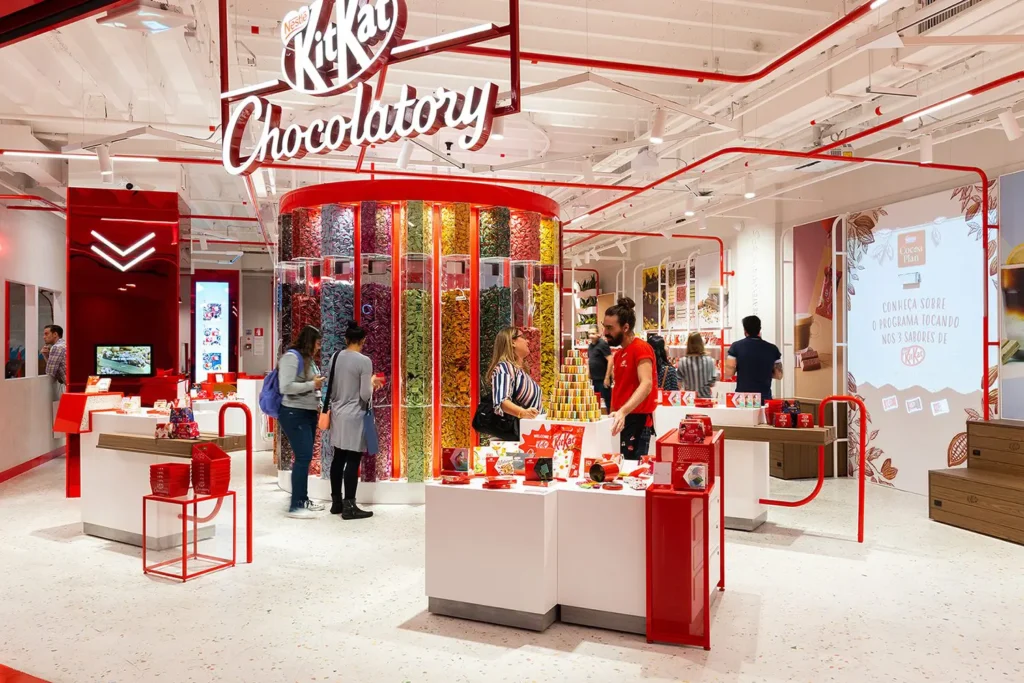
Source: Landor & Fitch
Additionally, I would like to share another example of a coffee brand – De’Longhi – that not only sells coffee but also provides customers with a completely new experience of enjoying coffee. Specifically:
- See: De’Longhi uses beautiful Italian-inspired designs that create an appealing visual experience for customers in their stores.
- Hear: They create vibrant and distinctive sounds, from the sound of boiling water in the coffee machine to the chatter of conversations in the store, providing a unique auditory experience.
- Read: De’Longhi shares “surprising tips” on how to enjoy coffee, helping customers gain a deeper understanding of coffee and develop new habits.
For example, in Vietnam, many people have their own habits when drinking coffee, such as sipping slowly, stirring the cup a certain number of times before starting or paying attention to the temperature of the coffee. These habits can influence the perception of the coffee’s flavor. Therefore, De’Longhi’s informative articles contribute to helping customers understand the product better and enhance their coffee experience.
- Do: They organize workshops for customers, allowing them to personally brew coffee with the guidance of experts, enabling them to have a better understanding of the coffee-making process.
- Smell: De’Longhi focuses on creating a unique aroma in their stores, a distinctive scent found only in De’Longhi, providing a unique olfactory experience.
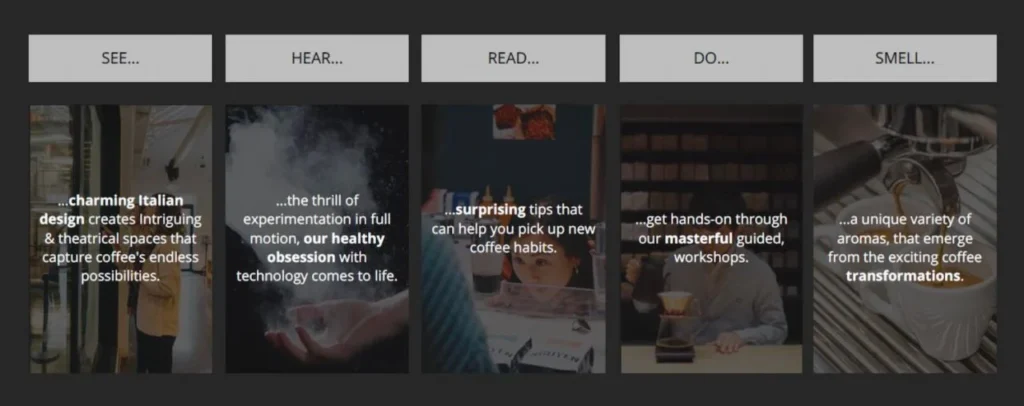
Source: Landor & Fitch
To provide a more visual illustration of this content, I will further share some local examples in Vietnam in the following sections to allow readers to gain a deeper understanding.


